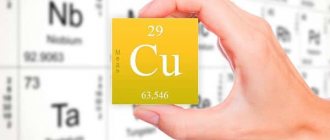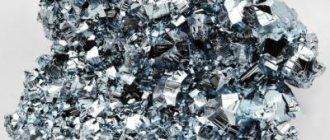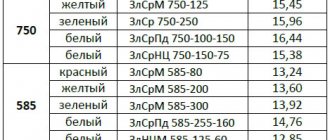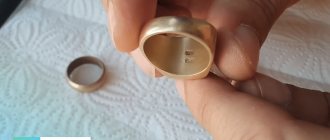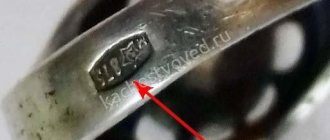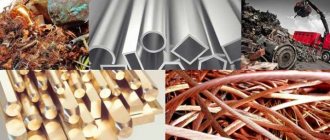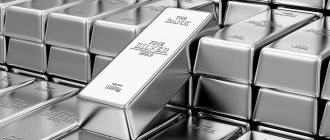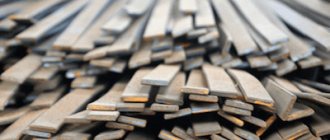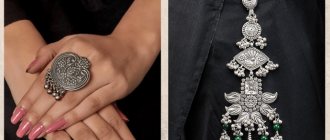Lead is an element of the fourth group of the main subgroup of the corresponding table of elements. Lead in its simplest form is a low-melting, malleable metal, white in color with a silvery tint and a bluish tint.
This type of material has been used for many millennia, as it is easily mined, perfectly processed and distributed in all corners of the world. Although native lead is very rare, it is widely found in a variety of other rocks. About eighty different types of rocks contain lead.
Density of pure metals
| Name of material, brand | Density ρ, kg/m3 |
| Aluminum | 2700 |
| Beryllium | 1840 |
| Vanadium | 6500-7100 |
| Bismuth | 9800 |
| Tungsten | 19300 |
| Gallium | 5910 |
| Hafnium | 13090 |
| Germanium | 5330 |
| Gold | 19320 |
| Indium | 7360 |
| Iridium | 22400 |
| Cadmium | 8640 |
| Cobalt | 8900 |
| Silicon | 2550 |
| Lithium | 530 |
| Magnesium | 1740 |
| Copper | 8940 |
| Molybdenum | 10300 |
| Manganese | 7200-7400 |
| Sodium | 970 |
| Nickel | 8900 |
| Tin | 7300 |
| Palladium | 12000 |
| Platinum | 21200-21500 |
| Rhenium | 21000 |
| Rhodium | 12480 |
| Mercury | 13600 |
| Rubidium | 1520 |
| Ruthenium | 12450 |
| Lead | 11370 |
| Silver | 10500 |
| Waist | 11850 |
| Tantalum | 16600 |
| Tellurium | 6250 |
| Titanium | 4500 |
| Chromium | 7140 |
| Zinc | 7130 |
| Zirconium | 6530 |
Magnesium Specific Gravity Table
Since magnesium is a complex material, it is not possible to independently calculate its specific gravity in the field. These calculations are carried out in special chemical laboratories. However, the average specific gravity of magnesium is known and is equal to 1.74 g/cm3.
To simplify the calculations, below is a table with the specific gravity of magnesium, as well as its weight depending on the units of calculation.
Specific gravity and weight of magnesium depending on units of measurement
| Material | Specific gravity (g/cm3) | Cube weight (kg) |
| Magnesium | 1,74 | 1740 |
Density of ferrous metals
| Name of material, brand | Density ρ, kg/m3 |
| Steel 10 GOST 1050-88 | 7856 |
| Steel 20 GOST 1050-88 | 7859 |
| Steel 40 GOST 1050-88 | 7850 |
| Steel 60 GOST 1050-88 | 7800 |
| S235-S375 GOST 27772-88 | 7850 |
| St3ps GOST 380-2005 | 7850 |
| Malleable cast iron KCH 70-2 GOST 1215-79 | 7000 |
| High-strength cast iron HF35 GOST 7293-85 | 7200 |
| Gray cast iron SCh10 GOST 1412-85 | 6800 |
| Gray cast iron SCH20 GOST 1412-85 | 7100 |
| Gray cast iron SCh30 GOST 1412-85 | 7300 |
Indicators of the specific gravity of other metals
Specific gravity is an indicator that is an integral characteristic of other metals.
The specific gravity of silver is affected by the fineness of the alloy. When other metals (copper, nickel) are added to it, the specific gravity and density are lost. Thus, the density of copper is 8.93 g/cm3, nickel – 8.91 g/cm3. All values are calculated using formulas.
You may be interested in: Gold and platinum: which is more expensive?
Silver is the same noble metal as gold. Its specific gravity is 10.5 g/cm3. It melts at a temperature of 960 degrees. The main physical characteristics of silver are:
- corrosion resistance;
- low resistance;
- increased light reflectivity.
Despite its natural softness, silver has a high density and specific gravity.
Titanium is a non-ferrous metal of a white-silver hue. It has high strength, although it is light in weight. So, it is 12 times stronger than aluminum and 4 times stronger than copper and iron. In terms of the degree of presence in the earth's crust, titanium is given fourth place among the rest.
The low specific gravity of titanium - 4.505 g/cm3 is more consistent with alkali metals. An oxide film forms on its surface, which prevents the formation of corrosion.
Zinc is also a non-ferrous metal with a white-bluish tint. It has medium hardness and an initial melting point of 419 degrees. Under the influence of a temperature of 913 degrees, this metal acquires a vaporous state. Zinc has a specific gravity of 7.13 g/cm3.
Normal temperature makes zinc brittle, but increasing it to 100 degrees makes the metal flexible and ductile. When interacting with air, an oxide film forms on the surface of zinc.
The color of lead is dirty gray, but this does not affect the natural shine of the metal. However, the glow stops quite quickly due to the formation of an oxide film on the surface of the lead. The lead alloy has a high specific gravity - 11.337 g/cm3. In this indicator, it exceeds zinc, aluminum, iron and some other metals. Despite its high density, lead is a very soft metal.
It is easy to knead in your hands or scratch with your nails. For lead, a temperature of 327.5 degrees is enough for it to begin to melt.
The table shows the specific gravity and melting points of other metals.
You may be interested in: How to effectively clean gold at home
| Name of metal | Melting point, °C | Specific gravity, g/cc |
| Zinc | 419.5 | 7.13 |
| Aluminum | 659 | 2.69808 |
| Lead | 327.4 | 11.337 |
| Tin | 231.9 | 7.29 |
| Copper | 1083 | 8.96 |
| Titanium | 1668 | 4.505 |
| Nickel | 1455 | 8.91 |
| Magnesium | 650 | 1.74 |
| Vanadium | 1900 | 6.11 |
| Tungsten | 3422 | 19.3 |
| Chromium | 1765 | 7.19 |
| Molybdenum | 2622 | 10.22 |
| Silver | 1000 | 10.5 |
| Tantalum | 3269 | 16.65 |
| Iron | 1535 | 7.85 |
| Gold | 1095 | 19.32 |
| Platinum | 1760 | 21.45 |
Density of stainless steels
| Name of material, brand | Density ρ, kg/m3 |
| 04Х18Н10 | 7900 |
| 08Х13 | 7700 |
| 08Х17Т | 7700 |
| 08Х20Н14С2 | 7700 |
| 08Х18Н10 | 7900 |
| 08Х18Н10Т | 7900 |
| 08Х18Н12Т | 7950 |
| 08Х17Н15М3Т | 8100 |
| 08Х22Н6Т | 7600 |
| 08Х18Н12Б | 7900 |
| 10Х17Н13М2Т | 8000 |
| 10Х23Н18 | 7950 |
| 12Х13 | 7700 |
| 12Х17 | 7700 |
| 12Х18Н10Т | 7900 |
| 12Х18Н12Т | 7900 |
| 12Х18Н9 | 7900 |
| 15Х25Т | 7600 |
Definition and use of density
As you know, to find the density of a substance, its mass is divided by its volume. Density is a physical and chemical characteristic of a substance. She is constant. Materials for industrial production must meet this indicator. To denote it, it is customary to use the Greek letter ρ.
The density of iron is 7874 kg/m³ , nickel - 8910 kg/m³, chromium - 7190 kg/m³, tungsten - 19250 kg/m³. Of course, this applies to hard alloys. In the molten state, substances have different characteristics.
In nature, only some metals are present in large quantities. The specific gravity of iron in the earth's crust is 4.6%, aluminum - 8.9%, magnesium - 2.1%, titanium - 0.63%. Metals are indispensable in most areas of human activity. Their production is growing year by year. For convenience, metals are divided into groups.
Iron and its alloys
Ferrous metals are usually called steel and cast iron of various grades. An alloy of iron and carbon is considered steel if the iron content is at least 45% and the carbon content is 0.1%-2.14%. Cast iron, accordingly, contains more carbon.
To obtain the necessary properties of steels and alloys, they are alloyed (alloying additives are added during remelting). This is how the specified grades are melted . All metal grades strictly comply with certain technical conditions. The properties of each brand are regulated by state standards.
Depending on the composition, the density of steel varies in the range of 7.6–8.8 (g/cm³) in the SGS or 7600–8800 (kg/m³) in the SI (this can be seen from Table 1). Of course, steel has a complex structure; it is not a mixture of different substances. However, the presence of these substances and their compounds changes properties, in particular density. Therefore, high-speed steels with a high tungsten content have the highest densities.
Non-ferrous metals and their alloys
Products made of bronze , brass, copper, aluminum are widely used in production:
- Bronzes are usually alloys of copper with tin, aluminum, lead and beryllium. However, in the Bronze Age, when the proportion of bronze in the total mass of metal products was almost 100%, these were copper-arsenic alloys.
- Zinc-based alloys - brass. Brass may contain tin, but its amount is less than zinc. Lead is sometimes added to produce free-flowing chips. In addition to jewelry alloys of brass and bronze, they are needed for machine and marine parts, hardware, and springs. Some varieties are used in aviation and rocketry.
- Duralumin (duralumin) - an alloy of aluminum and copper (copper 4.4%) is a high-strength alloy. Mainly used in aviation.
- Titanium is stronger than many steel grades. At the same time it is twice as light. These qualities have made it indispensable in most industries. It is also widely used in medicine (prosthetics). The share of titanium in the production of aircraft reaches 70% of all smelted in the world. About 15% of titanium is used for chemical engineering.
- Silver and gold are the first metals with which man became acquainted. Throughout the history of mankind, these metals have mostly been used for jewelry. And currently the trend continues.
- Due to its high refractoriness, tungsten is indispensable in instrument making . Its high density allows it to be used as radiation protection.
- Nickel and chromium form nichrome - a heat-resistant plastic alloy, very durable and reliable.
Different grades of steel and cast iron , bronze and other metals have different chemical compositions and different densities. The densities of all required materials are measured and systematized. Tables containing this data are available to users. With their help, you can easily find the mass of a product of a given shape.
This is interesting: Properties and applications of food grade stainless steel
Density of non-ferrous metal alloys
| Name of material, brand | Density ρ, kg/m3 |
| AL1 | 2750 |
| AL2 | 2650 |
| AL3 | 2700 |
| AL4 | 2650 |
| AL5 | 2680 |
| AL7 | 2800 |
| AL8 | 2550 |
| AL9 (AK7ch) | 2660 |
| AL11 (AK7TS9) | 2940 |
| AL13 (AMg5K) | 2600 |
| AL19 (AM5) | 2780 |
| AL21 | 2830 |
| AL22 (AMg11) | 2500 |
| AL24 (AC4Mg) | 2740 |
| AL25 | 2720 |
| B88 | 7350 |
| B83 | 7380 |
| B83S | 7400 |
| BN | 9500 |
| B16 | 9290 |
| BS6 | 10050 |
| BrAmts9-2L | 7600 |
| BrAZH9-4L | 7600 |
| BrAMZH10-4-4L | 7600 |
| BrS30 | 9400 |
| BrA5 | 8200 |
| BrA7 | 7800 |
| BrAmts9-2 | 7600 |
| BrAZH9-4 | 7600 |
| BrAZhMts10-3-1.5 | 7500 |
| BrAZHN10-4-4 | 7500 |
| BrB2 | 8200 |
| BrBNT1.7 | 8200 |
| BrBNT1.9 | 8200 |
| BrKMts3-1 | 8400 |
| BrKN1-3 | 8600 |
| BrMts5 | 8600 |
| BrOF8-0.3 | 8600 |
| BrOF7-0.2 | 8600 |
| BrOF6.5-0.4 | 8700 |
| BrOF6.5-0.15 | 8800 |
| BrOF4-0.25 | 8900 |
| BrOTs4-3 | 8800 |
| BrOTsS4-4-2.5 | 8900 |
| BrOTsS4-4-4 | 9100 |
| BrO3TS7S5N1 | 8840 |
| BrO3Ts12S5 | 8690 |
| BrO5TS5S5 | 8840 |
| BrO4Ts4S17 | 9000 |
| BrO4TS7S5 | 8700 |
| BrB2 | 8200 |
| BrBNT1.9 | 8200 |
| BrBNT1.7 | 8200 |
| LTs16K4 | 8300 |
| LTs14K3S3 | 8600 |
| LTs23A6Zh3Mts2 | 8500 |
| LC30A3 | 8500 |
| LTs38Mts2S2 | 8500 |
| LTs40S | 8500 |
| LS40d | 8500 |
| LTs37Mts2S2K | 8500 |
| LTs40Mts3ZH | 8500 |
| L96 | 8850 |
| L90 | 8780 |
| L85 | 8750 |
| L80 | 8660 |
| L70 | 8610 |
| L68 | 8600 |
| L63 | 8440 |
| L60 | 8400 |
| LA77-2 | 8600 |
| LAZ60-1-1 | 8200 |
| LAN59-3-2 | 8400 |
| LZhMts59-1-1 | 8500 |
| LN65-5 | 8600 |
| LMts58-2 | 8400 |
| LMtsA57-3-1 | 8100 |
| L60, L63 | 8400 |
| LS59-1 | 8450 |
| LZhS58-1-1 | 8450 |
| LS63-3, LMts58-2 | 8500 |
| LZhMts59-1-1 | 8500 |
| LAZ60-1-1 | 8200 |
| Ml3 | 1780 |
| ML4 | 1830 |
| Ml5 | 1810 |
| Ml6 | 1760 |
| Ml10 | 1780 |
| Ml11 | 1800 |
| Ml12 | 1810 |
| MA1 | 1760 |
| MA2 | 1780 |
| MA2-1 | 1790 |
| MA5 | 1820 |
| MA8 | 1780 |
| MA14 | 1800 |
| Kopel MNMts43-0.5 | 8900 |
| Constantan MNMts40-1.5 | 8900 |
| Cupronickel MnZhMts30-1-1 | 8900 |
| Alloy MNZh5-1 | 8700 |
| Cupronickel MH19 | 8900 |
| Alloy TB MN16 | 9020 |
| Nickel silver MNTs15-20 | 8700 |
| Kunial A MNA13-3 | 8500 |
| Kunial B MNA6-1.5 | 8700 |
| Manganin MNMts3-12 | 8400 |
| NK 0.2 | 8900 |
| NMTs2.5 | 8900 |
| NMTs5 | 8800 |
| Alumel NMtsAK2-2-1 | 8500 |
| Chromel T HX9.5 | 8700 |
| Monel NMZHMts28-2.5-1.5 | 8800 |
| TsAM 9-1.5L | 6200 |
| TsAM 9-1.5 | 6200 |
| TsAM 10-5L | 6300 |
| TsAM 10-5 | 6300 |
Comparison with other metals
Gold and silver are interesting for their precious properties. However, they are primarily metals and have qualities comparable to their “brethren”.
Comparative table of gold and silver with other metal alloys
| Me/alloy | Characteristics | |||
| At. weight, a.m.u. | Melting temperature, ºС | Density, g/cm3 | Mohs hardness | |
| Gold | 197 | 1095 | 19,32 | 2,5-3 |
| Silver | 107,9 | 962 | 10,5 | 2,5-3 |
| Platinum | 194,8 | 1768 | 21,45 | 4-4,5 |
| Lead | 207,19 | 327,4 | 11,337 | 1,5 |
| Cast iron | 11501200 | 7,1 | 7,5 | |
| Mercury | 200,59 | -38,83 | 13,5 | 1.5 (solid) |
| Copper | 63,54 | 1083 | 8,96 | 3 |
| Iron | 55,85 | 1535 | 7,87 | 4 |
| Steel | 600-1600 | 7,85 | 4-4,5 | |
Platinum is the closest in terms of characteristics to gold and silver. Also applies to noble metals; in density and atomic mass it is close to Au, but more refractory. Platinum is somewhat similar to Ag in its silvery-white color.
In addition to alloys - cast iron and steel - the presented metals belong to the group of transition metals. The exception is lead - it is from the light Me group. Only two metals from the list are found in living organisms - iron (blood) and copper (liver).
Almost always, to obtain a pure substance it is necessary to isolate it from oxides or salts and process ores. And only Au is able to “reveal itself” in its pure form, occurring in the form of nuggets or sand. The heaviest metal compared is gold.
Also, watch an interesting video about how you can distinguish gold and silver from other metals.

